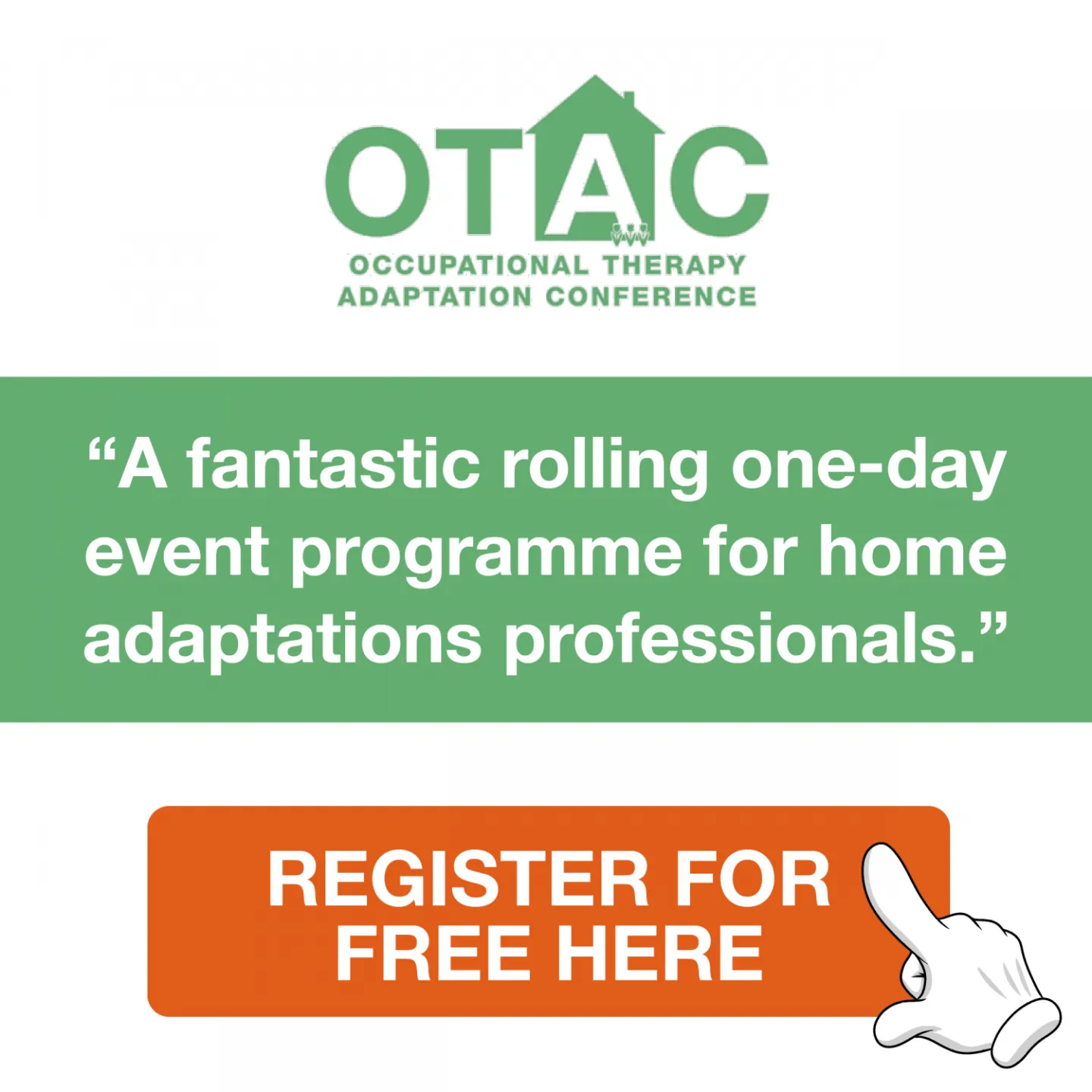TACTical Manoeuvres
In November 2024, Trusted Assessing and Care Training (TACT) analysed over 300 records of learners who had been trained as Trusted Assessors in the previous 12 month period. The findings make interesting reading and provide a snapshot of the range of roles and backgrounds engaging with the role of Trusted Assessor. Janet Seward, TACT Partnerships Manager explains...
Who are Trusted Assessors? The role of Trusted Assessor was first devised almost twenty years ago as part of a Department of Health initiative to improve access to community equipment. 'A Competency Framework for Trusted Assessors' was published as a result of consultation on identifying the skills needed to handle simple assessments, the Framework is still used as the basis for service and role planning and a copy of it can be downloaded free here .
In 2019 RCOT and Housing LIN's report ' Adaptations without Delay ' set out the case again for roles other than Occupational Therapist (OT) to handle simple cases and know when to refer the more complex ones enabling scarce OT resources to focus on where they are most needed.
For most learners, our findings show that the role of Trusted Assessor is typically an additional role being added to a core job role. Fewer than 1% of the people TACT trained gave Trusted Assessor as their current job title; only three people in our sample of over 300.
More than two-thirds of learners are female at 68%, learners come from a wide age range:
AGE RANGE and % OF LEARNERS
Under 30 – 13%
31-40 – 24%
41-50 – 29%
51-60 – 26%
61+ – 8%
Two percent of learners requested adjustments to the learning experience, these were requested at the time of booking and those adjustments were made for them.
A RANGE OF ORGANISATIONS
A wide range of organisations are engaging with the role of Trusted Assessor; Local Authorities and their directly contracted providers are at the top of the list with a total of 44% of learners (40% directly employed by local authorities). This covers a wide variety of service delivery areas and levels – see the job role split for a sense of the variety of those. Second in importance are NHS Trusts with 20% of learners.
In third place we see domiciliary care providers – these organisations have daily contact with service users and are ideally placed to notice needs and be able to act on them. At 13% of learners, we expect to see further growth in this part of the health and social care sector.
Home Improvement Agencies (HIAs) and Housing Associations are in equal next place with 6% for each of our learner base.
Both types of housing-based specialist organisations are tasked with adapting homes to make them suitable for older and disabled people as part of their daily work.
AVOID POTENTIAL DELAYS
The housing association staff we have trained are keen to act quickly in providing suitable housing and they want to avoid potential delays caused by local waiting lists for assessments.
TACT has been delighted to train staff from construction and surveying organisations, charity and voluntary organisations, and independent OT practices, and we hope to engage with more of them this year.
And the take-up of places from the retail sector (companies supplying independent living equipment and home adaptations is really pleasing to see). BHTA, the leading trade body in the sector, endorses the value of this qualification for staff involved in selling and recommending equipment to the public.
Here is the breakdown of the numbers by organisation type:
Local authority 40%
NHS Trust 20%
Domiciliary care providers 13%
Home improvement agencies 6%
Housing associations 6%
Retailers 5%
Local authority – contracted provider 4%
Construction and surveying companies 2%
Care homes 1%
Charity / voluntary organisations 1%
Independent OTs 1%
The major finding from our analysis is the inspiring range of roles who are adding the role of Trusted Assessor to their current job role. The top ten most frequently mentioned roles are set out below:
OT 17%
OTA/Therapy Assistant 9%
Care Director/Care mManager/Care Team Leader/Care Supervisor 9%
Social Worker/Social Care Officer/Social Care Practitioner/Social Care Assistant 8%
Caseworker 7%
Handyperson 4%
Surveyor 3%
Care Worker/Healthcare Assistant/Healthcare Worker 3%
Technical Caseworker/Technical Officer/Technical Assistant 3%
Independent Living Advisor/Independent Living Coordinator/Independent Living Officer 2%
The most surprising finding is the sheer range of roles emerging from this analysis, even after grouping similar roles together.
We hope that the list provides inspiration to leaders and service managers considering how to speed up access to home adaptations.
We train many OTs and at first sight this is surprising, given that the role is designed to free up OTs to deal with more complex cases. Most of the OT learners we see are newly qualified into their role or they are changing specialisation; the most common switch is from specialising in mental health services to becoming more involved in equipment and home adaptations.
ROLE DEVELOPMENT
And organisations employing OT assistants and apprentices often include the qualification as part of their role development, seeing the learning as a core component of their L&D programme.
And here is the long-tail of other job-titles:
Rehab assistant/Rehab practitioner/Rehab assistant/Rehab officer
Care coordinator/Health and social care coordinator
Sales director/Sales manager/Sales executive
Home improvement officer
Mobility advisor
Resident liaison officer/Customer support officer
Ceiling track hoist and stair lift engineer/Ceiling track hoist engineer/Ceiling track hoist technician/Rails technician/Service engineer – IL equipment
Adaptations officer/Aids and adaptations officer
Housing allocations officer/Housing asset management officer
Social care assessment officer/Social care assessor
Physiotherapist
Trusted Assessor
Care officer/Care support officer
Cost of living response officer
Enablement officer
Home safety officer
Reablement practitioner
Service coordinator – independent living
Adaptations manager/Team manager – adaptations
Care compliance officer/Care quality officer
Community falls nurse/Falls assessor
Community health engagement officer/Community officer
Customer service manager/Customer services representative
Home adaptations advisor/Home adaptions administrator
Accessibility manager
Clinical administrator
Community alarms officer
Community marshal
Contracts manager
DFG business support
Discharge to assess coordinator
Enablement manager
Extra care scheme manager
Handyperson coordinator
Home energy officer
Housing adaptation advisor
Housing manager
Housing neighbourhood officer
Information and advice officer
Logistics coordinator
Mobile response team leader
Operations manager
Product specialist
Reablement manager
Safeguarding adults officer
Sensory support administrator
Small repairs operative
Social liaison officer
Social prescriber
Specialist independence assistant
Technical support manager
Trainee property officer
We are encouraged by the vision shown by employers in understanding how being qualified as a Trusted Assessor can optimise those visits and interventions with older and disabled people that form part of their daily work. We are excited to explore how the role can be expanded further into areas including charity and voluntary roles that provide support, social prescribers, and a wide range of services around the person.
On the five-year anniversary of the 'Adaptations without Delay' report and almost twenty years since the publication of the 'Competency Framework for Trusted Assessors' there is much more that can be done to transform access to home adaptations.
ABOUT TACT
TACT is an OT-led national company specialising in assessing, training, and consulting on assessing for equipment and home adaptations.
Established in 2022 by Clare Barber, who devised the national Trusted Assessor qualifications at levels three and four, courses are accredited by OCN London and include both public and private training programmes in a range of formats. TACT's trainers are all OTs with a background in home adaptations.
Find out more here .


